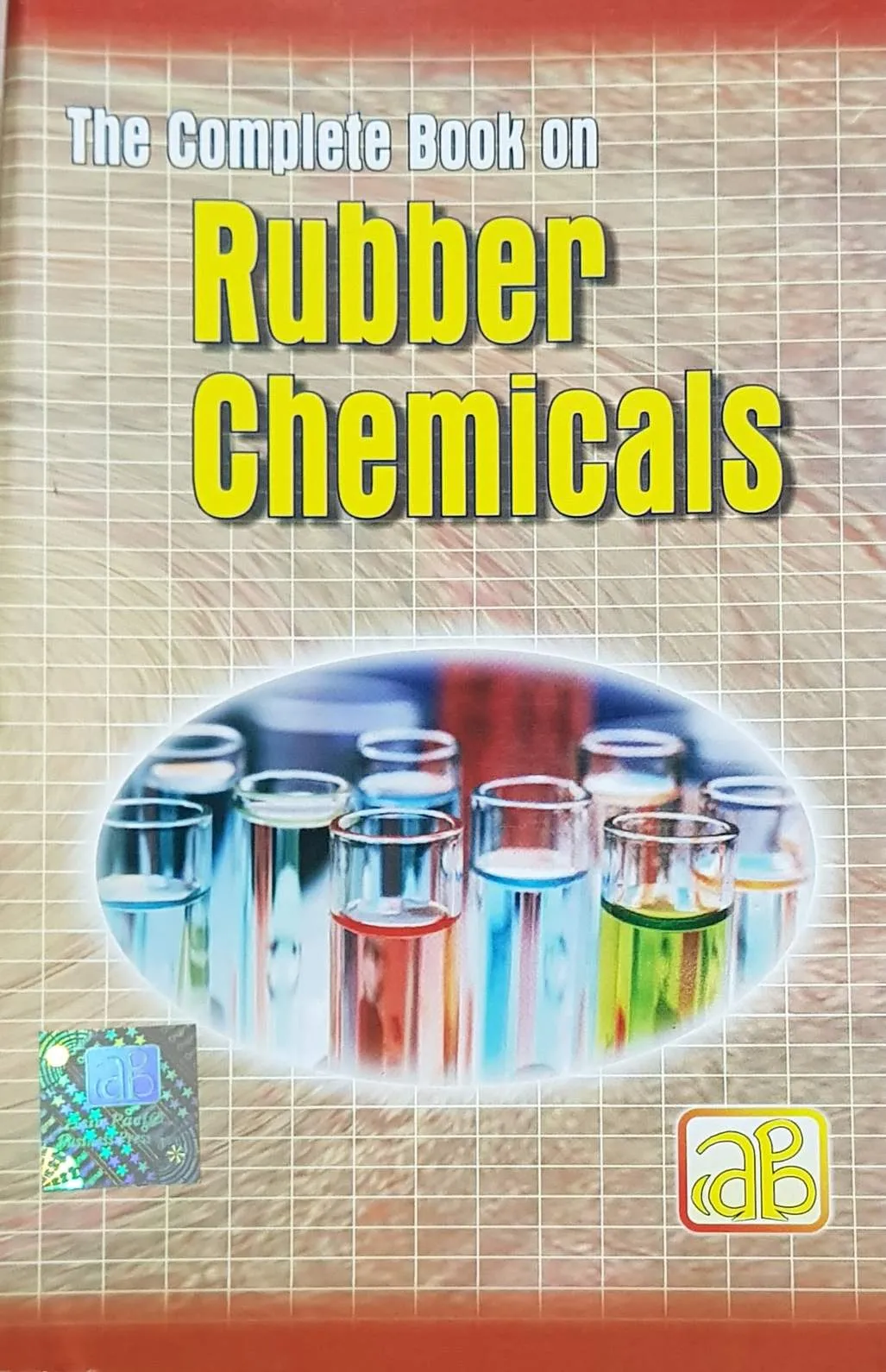Rubber Chemicals are essential additives for the manufacture and quality improvement of rubber products such as automobile tires, rubber hoses, and quake absorbing rubbers. For rubber processing and compounding certain chemicals are required which are known as rubber chemicals. The primary requirement of adding different compounding ingredients to develop the different grades of rubber compounds to meet various service needs at an economic price and to provide certain desired physical properties to a considerable extent. Some of the examples of rubber chemicals are waxes, amines, thiazoles, silicone resins, alcohol, sulphuric acids, dithiocarbamates, phosphoric acid etc. They are mostly applicable for white and coloured rubber. They are generally used in rubber tubing, conveyor belt cover balloons, hot water bottles injection bottle caps, footwear related items etc. Indian rubber chemical industry has high growth potential triggered by increased consumption and steady growth in tyre and rubber industries. The speciality chemicals industry in India is projected to grow at 15-17 % per year to reach $ 80-100 billion by 2020. The demand for rubber chemicals is on the rise. All major manufacturers have raised the prices of their products substantially. Massive investment is expected to flow into the rubber chemicals manufacturing sector in India in the coming years from both domestic and global players.
The book covers different types, physical and chemical properties, applications of different rubber chemicals like waxes, synthetic organic chemicals, amines, silicones resins, releasing agents, stabilizers, solvents and many more. Some of the fundamentals of the book are synthetic hydrocarbon waxes, uses of amines in polymers, synthetic organic chemicals, analysis of specific anti-degradants, stabilization of halogenated polymers, anaerobic fermentations, the manufacture of sulfuric acid, analysis of dithiocarbamate esters, sodium hyposulfite (hydrosulfite), citric acid, gluconic acid, acetic acid, itaconic acid, kojic acid etc.
Rubber chemicals have a huge potential growth in future and considering the importance of the chemical we have brought out this book which will be an invaluable resource to rubber chemical manufacturers, technocrats, researchers, consultants and new entrepreneurs.

The Complete Book on Rubber Chemicals
1. Waxes
Petroleum Waxes
Paraffin Waxes
Microcrystalline Waxes
Uses
Test Methods
Safety
Natural Waxes
Vegetable Waxes
Animal Waxes
Mineral Waxes
Synthetic Waxes
Synthetic Hydrocarbon Waxes
Miscellaneous Synthetic Waxes
2. Amines
Physical Properties
Chemical Properties
Manufacture
Uses of Amines in Polymers
Catalysts
Solvents
Emulsifiers
Compounding and Finishing
3. Thiazoles
Antifungal Activity
4. Synthetic Organic Chemicals
Chemicals Derived from Methane
Synthesis Gas
Chlorinated Methanes
Acetylene
Carbon Disulfide
Chemicals Derived from Ethylene
Polyethlene
Ethylene Oxide
Chlorinated Hydrocarbons
Ethanol
Ethylbenzene
Acetaldehyde, Acetic Acid, Vinyl Acetate
Ethylene Oligomers
Chemicals Derived from Propylene
Isopropyl Alcohol
Polyproplene
Acrylonitrile
Propylene Oxide
Dodecene, Nonene, Cumene
Oxochemicals
Glycerine
Butanes, Butylene, LPG and Higher Aliphatic Hydrocarbons
LPG and n-Butane
Isobutane
n-Butylenes
Isobutylene
n-Pentane and Cyclopentane
Isopentane
n-Paraffins, Monoolefins, Primary and Secondary Higher Alcohols
Aromatic Chemicals
Benzene Products
Toluene Products
Chemicals from Xylene
Naphthalene Chemicals
Other Polymethylbenzenes
5. Silicone Resins
Manufacture
Surfactants and Specialties
Emulsions
Greases and Compounds
Surfactants
Primers and Adhesion Promoters
6. Silicone Fluids
Silicone Elastomers
Azine and Related Dyes
Methods of Manufacture
Commercial Grade and Specifications
Methods of Analysis
Identification
Assay Methods
Application Methods
Determination of Impurities
7. Antioxidants and Antiozonants
Testing and Evaluation Methods
Antioxidants
Antiozonants
General Methods of Analysis
Separation and Identification
Gas Chromatography
Paper Chromatography
Adsorption Chromatography
Thin-Layer Chromatography
Color Tests for Antidegradants
Spectrophotometric Identification of Antidegradants
Quantitative Determination
Analysis of Specific Antidegradants
N-Phenyl-2-Napthylamine
Separation and Identification
Assay Methods
Determination in Mixtures
Acetone-diphenylamine Reaction Products
Separation and Identification
Assay Methods
Determination in Mixtures
1,2-Dihydro-2,2,4-trimethyl-6-ethoxyquinoline
N-1,3-Dimethylbutyl-N’-phenyl-p-phenylenediamine
Separation and Identification
Assay Methods
Determination in Mixtures
N,N’-Di-3-(5-methylheptyl)-p-phenylenediamine
Separation and Identification
Assay Methods
Determination in Mixtures
2,6-Di-tert-butyl-p-cresol
Separation and Idendtification
Assay Methods
Determination in Mixtures
Polygard
Separation and Identification
Assay Methods
Determination in Mixtures
Release Agents
Properties Required
Methods of Application
Industrial Fields using Abherents
Classes of Release Agents
8. Stabilizers
Methods
Stabilization of Polyolefin Resins
Stabilization of Halogenated Polymers
Commercial Stabilizer Materials and Mixtures
Epoxides
Miscellaneous Special-Purpose Stabilizers
9. Alcohol
Fermentation
Anaerobic Fermentations
10. Nitrogen Compounds
Ammonia Synthesis
Uses of Ammonia
Storage and Transport
Nitric Acid
Production
Uses of Nitric Acid
Ammonium Nitrate
Hexamethylenetetramine
Hydrazine
Manufacture
Stabilization
Urea
Uses of Urea
Hydrogen Cyanide
Acrylonitrile
Melamine
Amines
Aniline
Isocycnates
Other Nitrogen Compounds
11. Sulfuric Acid
Uses of Sulfuric Acid
Kinds of Acid
The Manufacture of Sulfuric Acid
Development of the Sulfuric Acid Industry in the United States
The Chamber Process for Making Sulfuric Acid
The Contact Process
Sulfur
Uses
Sources
12. Dithiocarbamates
Dithiocarbamic Acid Salts
Analysis of Dithiocarbamate Salts
Dithiocarbamate Esters
Analysis of Dithiocarbamate Esters
Thiuram Disulfides
Analysis of Thiuram Disulfides
13. Other Chemicals
Sodium Chloride
Soda Ash, The Commercial Sodium Carbonate
Solvay Process
Soda Ash from Other Sources
Soda Ash-related Products
Sodium Sulfate
Salt Cake
Glauber Salt
Hydrochloric Acid
Sodium Silicate
Bromine and Bromides
Sodium Sulfides
Sodium Thiosulfate
Sodium Bisulfate, Anhydrous
Sodium Hyposulfite (Hydrosulfite)
Caustic Soda and Chlorine
Electrolysis of Brine
Concentration of the Caustic Liquor
The Mercury Cell
Hydrogen Disposal
Other Processes for the Production of Chlorine
Liquid Chlorine
Bleaches
14. Organic Acids
Citric Acid
Gluconic Acid
Acetic Acid
Itaconic Acid
Kojic Acid
Other Ketogenic Fermentations
Sorbose
2-Ketogluconic Acid
Nonionic Surfactants
Ampholytic Surfactants
15. Phosphoric Acid
Production of Elemental Phosphorus and Phosphoric Acid
Industrial Phosphates
Sodium Pyrophosphate
Wet-Process Phosphoric Acid
Potassium Salts
Soluble Potassium Salts
Potassium Nitrate
Types of Volatile Solvents
Customer Reviews
No reviews yet. Be the first to write one!

